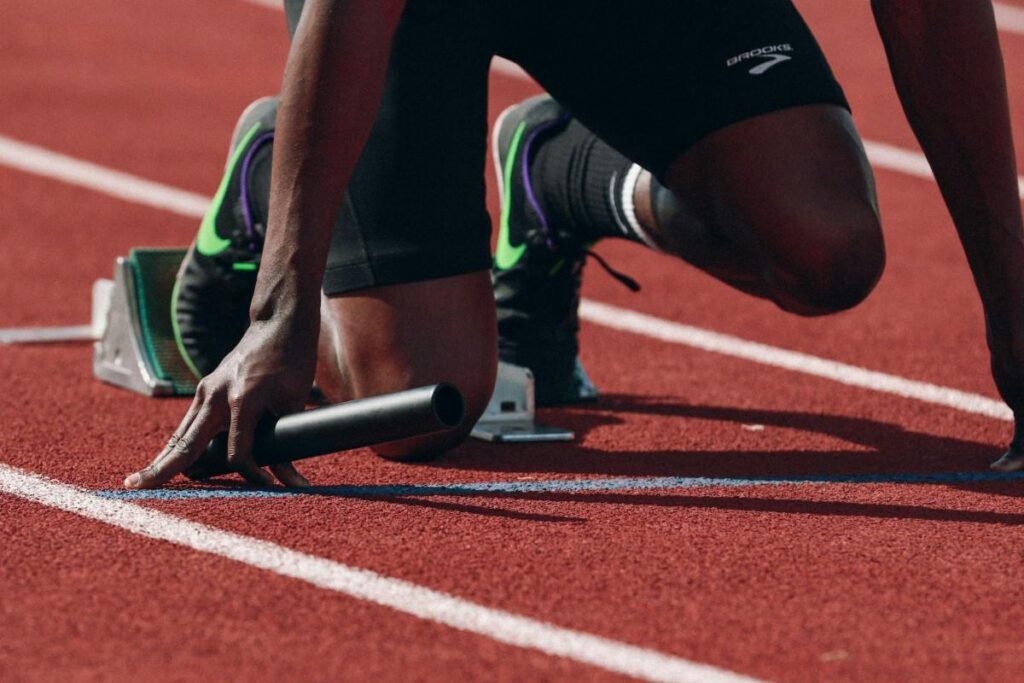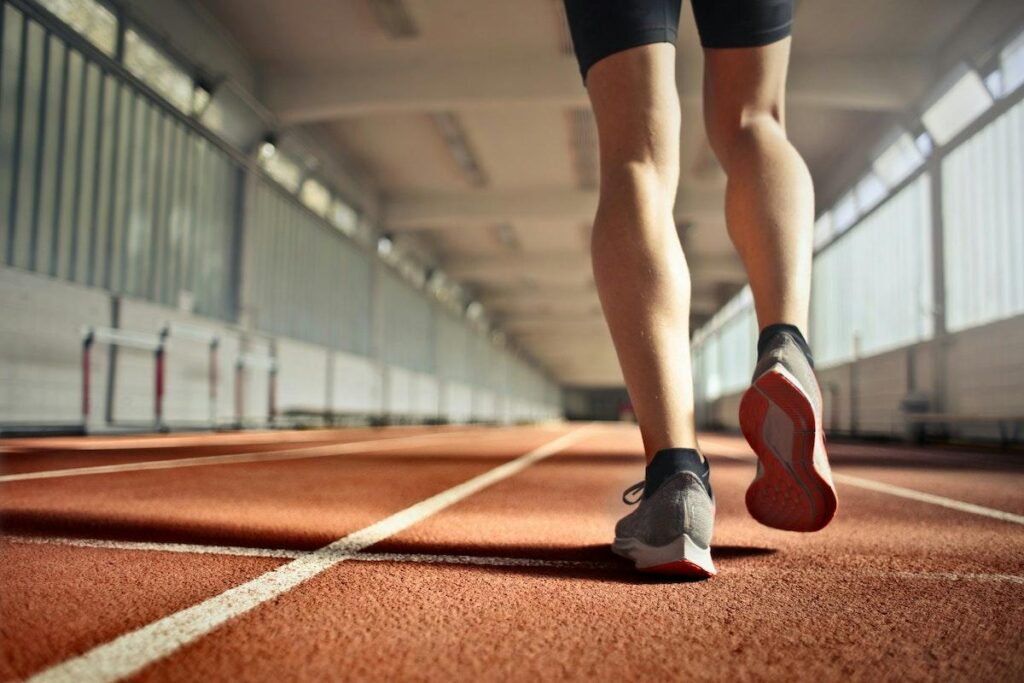Have you ever wondered why your runs often leave you feeling exhausted and sore? It’s a common frustration shared by many runners, both new and experienced. The culprit behind these struggles often hides in plain sight – your running form.
Running is more than just putting one foot in front of the other; it’s about efficiency, power, and injury prevention. That’s where Running Form Coach Methods come into play. In this blog, we’ll delve into the world of running form optimization, where expert coaches analyze every aspect of your technique to help you reach your running goals.
Whether you’re aiming for a personal best time, aiming to run pain-free, or just looking to enjoy your runs more, these methods can make a significant difference. Get ready to run smarter and stronger as we explore the transformative world of Running Form Coach Methods.
Why is Running Form Coach Methods needed?

Running form coach methods are essential for several reasons. First and foremost, they help prevent injuries by teaching runners proper posture, stride, and mechanics, reducing the risk of overuse injuries and strains.
These methods also improve running efficiency, allowing individuals to use less energy and run faster or longer. Additionally, a running form coach can provide personalized feedback and guidance, helping runners reach their performance goals and adapt their technique as needed.
Utilizing the running pose method, and running form coach methods is crucial for both novice and experienced runners to enhance their performance, stay injury-free, and enjoy a more fulfilling running experience
Injury prevention
Running form coaches are instrumental in injury prevention during running. They offer a comprehensive approach to minimizing the risk of injuries by focusing on several key aspects:
Biomechanical Assessment:
Running form coaches often begin by analyzing a runner’s biomechanics. They assess factors like foot strike, cadence, posture, and stride length to identify any issues that could lead to injuries.
Technique Correction:
A skilled running technique coach provides athletes with personalized guidance, helping them address form-related issues like overpronation reduction, overstriding prevention, and other common problems.
Strength and Flexibility:
Running form coaches often incorporate strength and flexibility exercises into their coaching. This helps runners develop the muscle strength and flexibility needed to support proper form and reduce the risk of muscle imbalances and overuse injuries.
Training Progression:
Coaches create tailored training plans that gradually increase mileage and intensity to prevent overtraining and injuries. They emphasize the importance of rest and recovery to allow the body to heal and adapt.
Footwear and Gear:
Running form coaches provide recommendations for appropriate footwear and gear based on a runner’s specific needs and foot type. Wearing the right shoes can mitigate the risk of injuries related to improper footwear.
Performance improvement

Strength and Conditioning:
Running form coaches often incorporate strength and conditioning exercises into training plans. Building strength in the core, legs, and upper body can enhance overall performance and reduce the risk of injury.
Interval Training:
Coaches design interval workouts that target specific energy systems, improving speed and endurance. These workouts are tailored to a runner’s goals and current fitness level.
Biomechanical Analysis:
Coaches assess a runner’s biomechanics to identify areas that can be optimized for better performance. This includes analyzing foot strike, stride length, cadence, and posture.
Efficiency and energy conservation
Coaches specializing in running form, in collaboration with running physical therapy experts, play a pivotal role in aiding runners to enhance their efficiency and preserve energy throughout their runs. By analyzing and refining a runner’s biomechanics, these coaches ensure that every stride is executed with precision, reducing wasted movement and energy expenditure.
They also emphasize proper pacing, teaching runners to distribute their effort effectively throughout a run or race. Through personalized feedback and training plans, running form coaches work in conjunction with running physical therapy experts.
This collaboration enables athletes to achieve better performance by harnessing their energy more efficiently, leading to faster times and improved endurance. This comprehensive approach to running optimization ensures that athletes can perform at their best while minimizing the risk of injuries and discomfort.
Correcting bad habits
Running form coaches excel in identifying and correcting detrimental habits that may have crept into a runner’s technique over time.
Through personalized analysis and targeted guidance, these coaches help individuals break free from inefficient movement patterns, poor posture, and other detrimental practices that can hinder performance and increase the risk of injuries.
By instilling proper form and mechanics, running form coaches empower runners to optimize their training and enjoy a smoother, more effective, and injury-resistant running experience.
Individualized guidance
Individualized guidance from a running coach, in conjunction with the expertise of professionals like Up and Running Physical Therapy, is a valuable aspect of coaching services. This personalized approach tailors training plans, form corrections, and strategies to a runner’s unique needs and goals, while physical therapists from Up and Running can provide specialized care and rehabilitation for any existing or potential injuries, ensuring a holistic approach to runners’ health and performance.
Coaches take into account factors such as a runner’s fitness level, strengths, weaknesses, and any specific challenges they face. This individualized attention helps runners make targeted improvements, maximize their potential, and achieve their desired outcomes, whether that’s improved performance, injury prevention, or overall fitness.
Proper Running Form

Proper running form refers to the ideal biomechanical technique and posture that a runner should maintain while running. It plays a critical role in optimizing performance, reducing the risk of injuries, and enhancing overall running efficiency. Key elements of the proper running form include:
Posture
Does running improve posture? Yes, indeed! Maintain an upright posture with a slight forward lean from the ankles while running to help enhance your overall posture. Avoid slouching or leaning too far forward or backward.
Foot Strike
Instead of striking with the heel, strike with the midfoot or forefoot to reduce impact forces.
Cadence
Strive for a higher cadence (number of steps per minute) to reduce overstriding and improve efficiency. Many experts recommend around 170-180 steps per minute.
Arms and Hands
Keep your arms relaxed, bent at a 90-degree angle, and close to your body. Hands should be loosely clenched, and arm movement should be in sync with your leg movement.
Breathing
Breathe rhythmically and deeply. Avoid shallow breathing, and sync your breath with your stride when possible.
Head Position
Look straight ahead, focusing your gaze on the horizon. Avoid looking down at your feet, as this can affect your posture and balance.
Improper Running Form
Improper running form refers to biomechanical techniques and postures that deviate from the optimal form recommended for running. Running with improper form can lead to various issues, including increased risk of injuries and reduced running efficiency. Common elements of improper running form include:
Heel Striking
Landing on the heel with each stride instead of a midfoot or forefoot strike can lead to excessive impact forces, potentially causing injuries such as shin splints or knee pain.
Overstriding
Taking excessively long strides can lead to inefficient running and increase the risk of overuse injuries, particularly in the lower limbs.
Slouching Posture
A hunched or slouched posture can restrict airflow, reduce lung capacity, and lead to inefficient breathing during a run.
Low Cadence
A low cadence (fewer steps per minute) can result in overstriding and inefficient use of energy.
Tight Muscles
Running with tense or tight muscles can decrease flexibility, increase the risk of muscle imbalances, and hinder performance.
Inconsistent Arm Movement
Uncoordinated arm movement or swinging arms excessively can affect balance and overall running rhythm.
Conclusion
The world of Running Form Coach Methods offers a path to more effective and enjoyable running. Your running form is the cornerstone of your performance and well-being. Whether you’re aiming to break personal records or simply want to run without pain, these methods provide invaluable insights.
So, lace up your shoes, apply what you’ve learned, and let your strides carry you toward your running aspirations. With Running Form Coach Methods, every step is a step closer to your best self on the road or trail.

